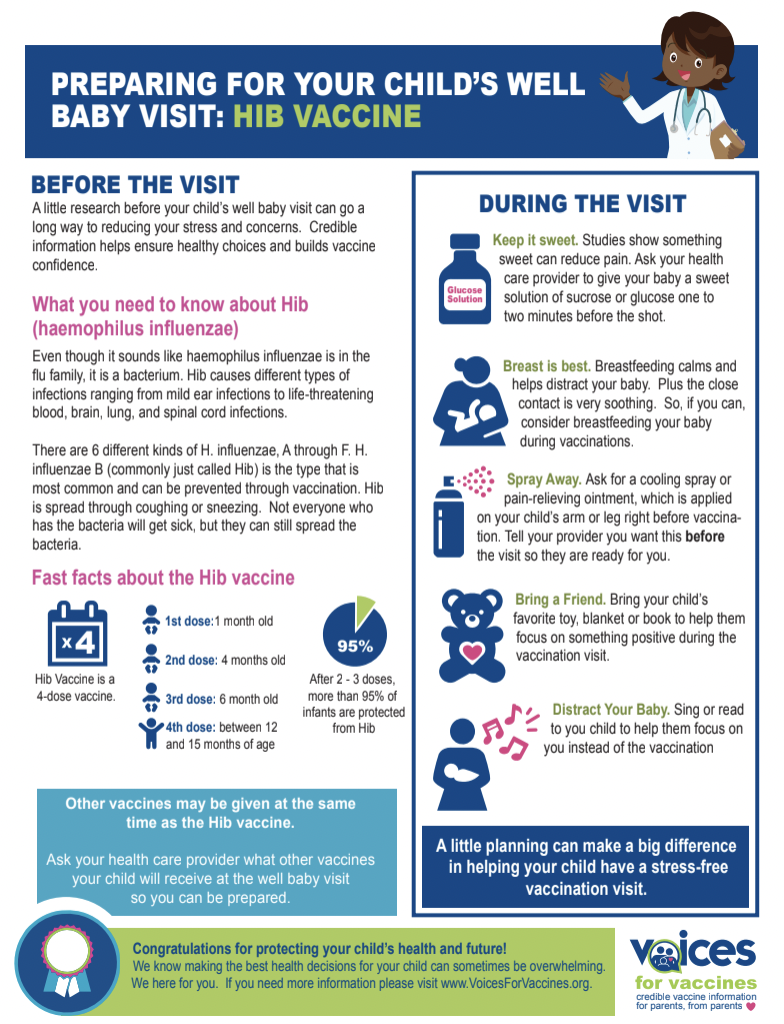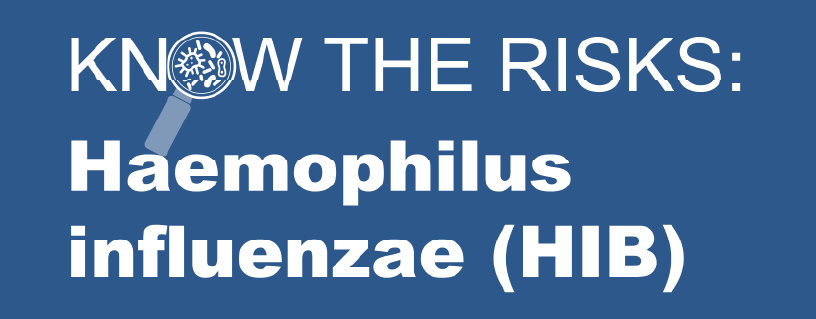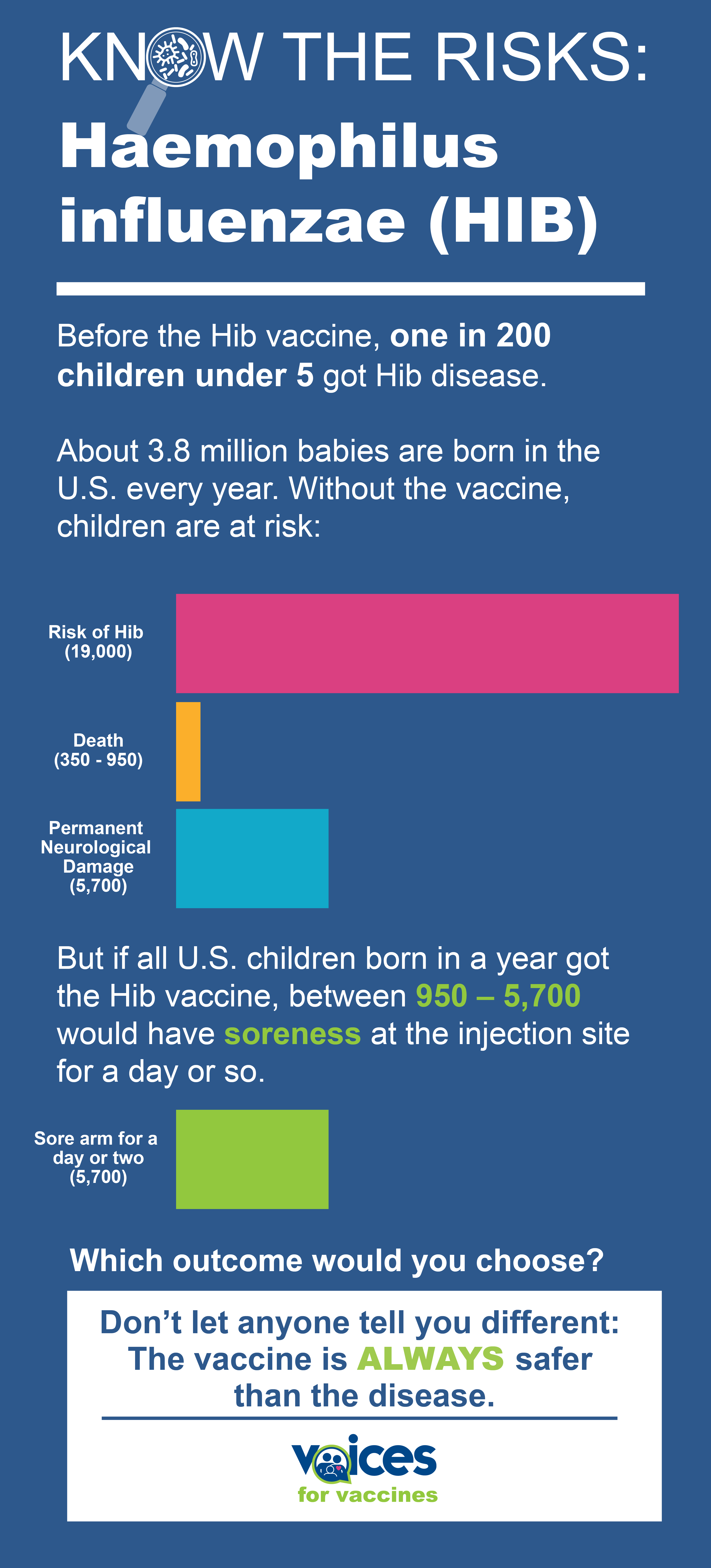Haemophilus influenzae (Hib) Vaccine
What is Haemophilus influenzae (Hib)?
Even though it sounds like Haemophilus influenzae is in the flu family, it is a bacterium. Hib causes different types of infections ranging from mild ear infections to life-threatening blood, brain, lung, and spinal cord infections. The term “Haemophilus influenzae disease” is the name for any of the illnesses that the bacteria causes.
There are 6 different kinds of H. influenzae, H. influenzae A through F. H. influenzae B (commonly just called Hib) is the type that is most common and can be prevented through vaccination. Hib is spread through coughing or sneezing. Not everyone who has the bacteria will get sick, but they can still spread the bacteria.
Symptoms of Hib depend on what part of the body it infects:
| Lung Infection (Pneumonia) | Bloodstream Infection | Brain Infection (Meningitis) |
|
|
|
What are the risks from Hib?
Babies and children younger than 5 are at increased risk of Hib. More than half of Hib infections (50 – 65%) involve the membranes covering the brain (meningitis). Of people getting meningitis, 2 – 5% will die, and 15 – 30% of survivors will have permanent neurologic damage, including blindness, deafness, and intellectual disability.
How effective is the Hib vaccine?
Most children (95%) are protected from Hib disease after two or three doses. Before the vaccine, Hib was the leading cause of bacterial meningitis in children under five. Each year 20,000 children got Hib disease, and 1,000 of them died. With vaccination, there are now only a few dozen cases a year.
How safe is the Hib vaccine?
The Hib vaccine is safe, and serious side effects are rare. The most common reactions are:
- redness or swelling where the vaccine is received (usually seen in 5 – 30% of children)
- a fever over 101°F (up to 5% of children)
When should my child get the Hib vaccine?
A child needs three to four doses of Hib vaccine depending on which vaccine they receive.
Children should get Hib vaccine at:
- 2 months
- 4 months
- 6 months (depending on the vaccine)
- 12 – 15 months
Talk to your healthcare provider about what vaccines your family needs.
What can I expect at a Hib vaccine appointment?
A little research before your child’s well baby visit can go a long way to reducing your stress and concerns. Credible information helps ensure healthy choices and builds vaccine confidence.
Hib vaccine Fact Sheet
Does your baby need a Hib vaccine? Download our Hib vaccine fact sheet to prepare for your appointment.
Where can I get more information?
These organization are vaccine experts and can provide credible information:
How do I know this information is credible?
We work for parents so we make sure that parent concerns are addressed using facts and science and our content is reviewed by experts who have spent their careers studying vaccines. Learn more about how we ensure we are bringing you the best information to help you make healthy choices for your family.











